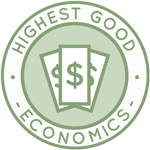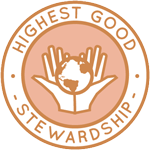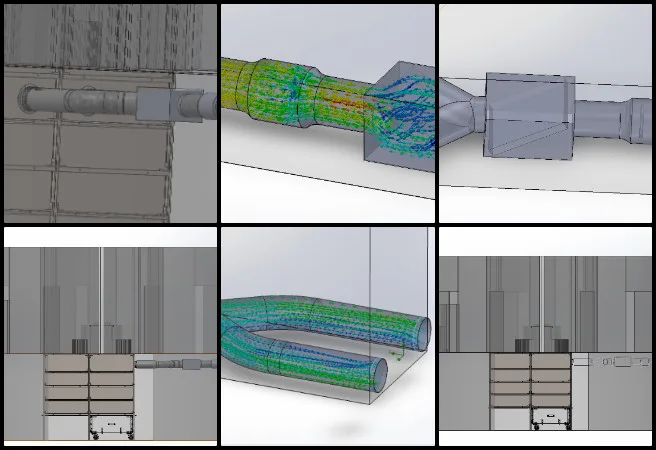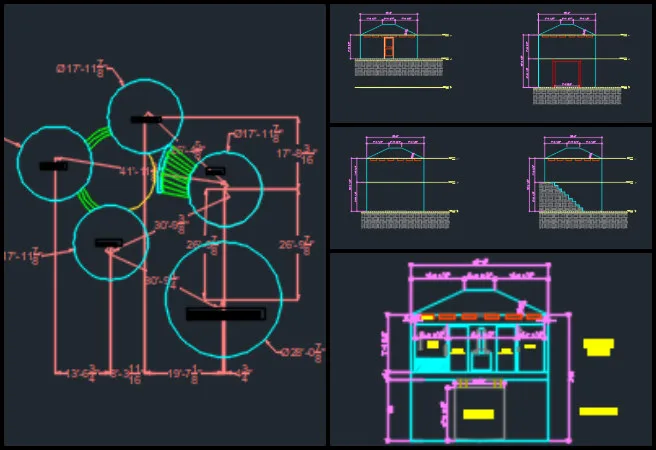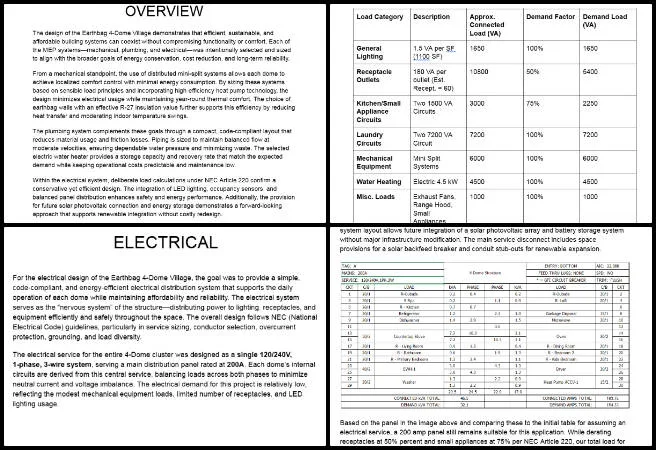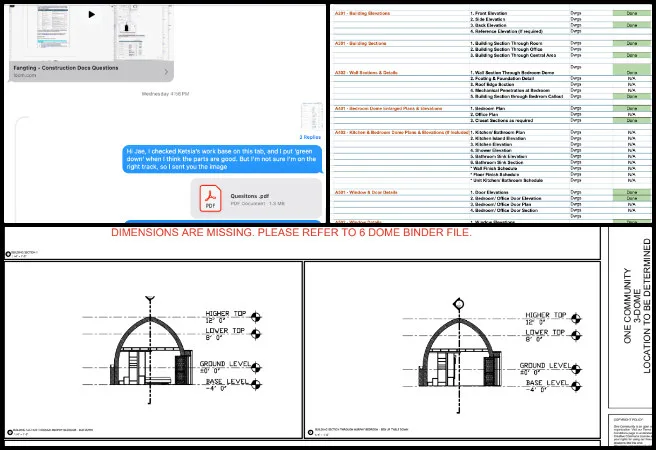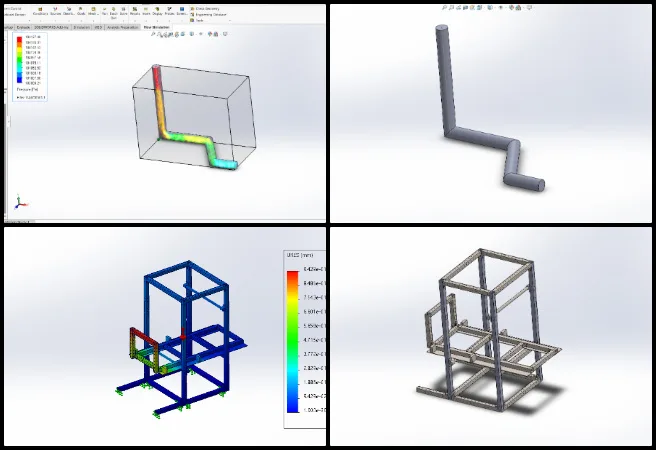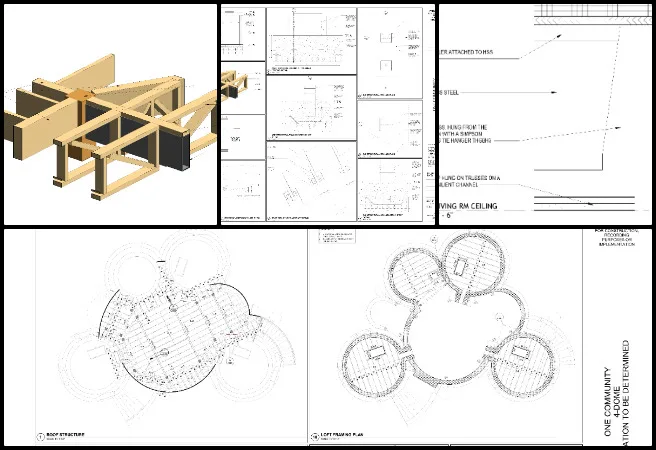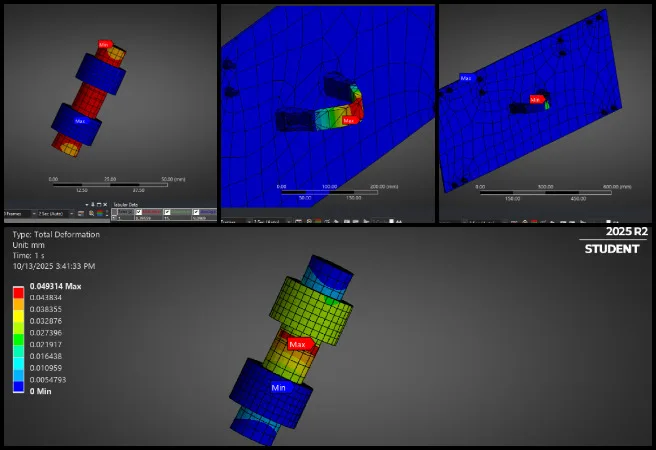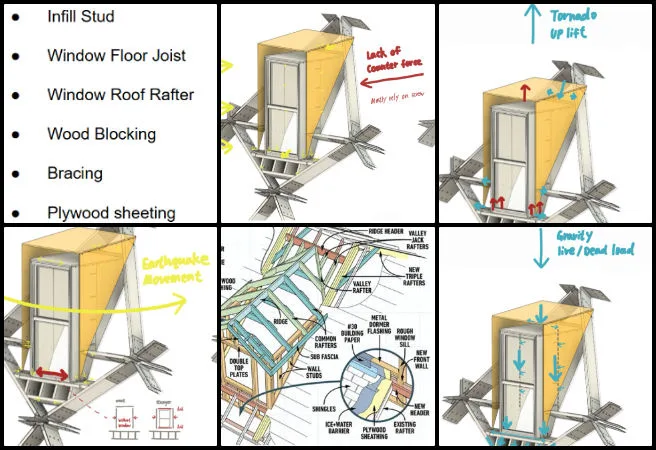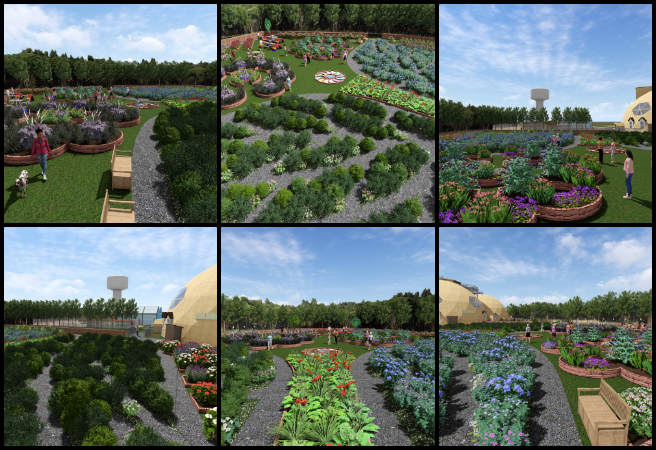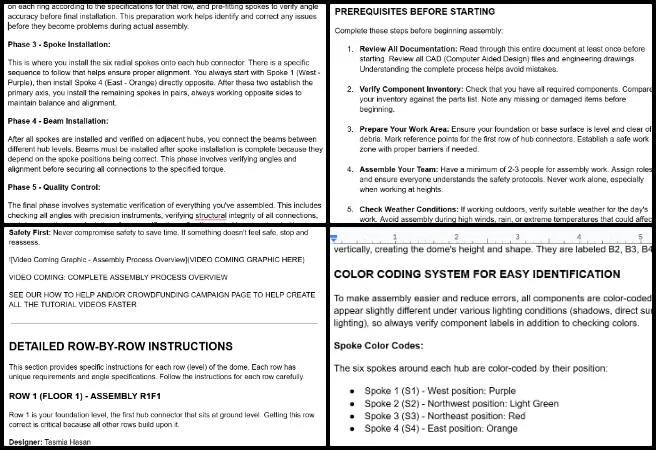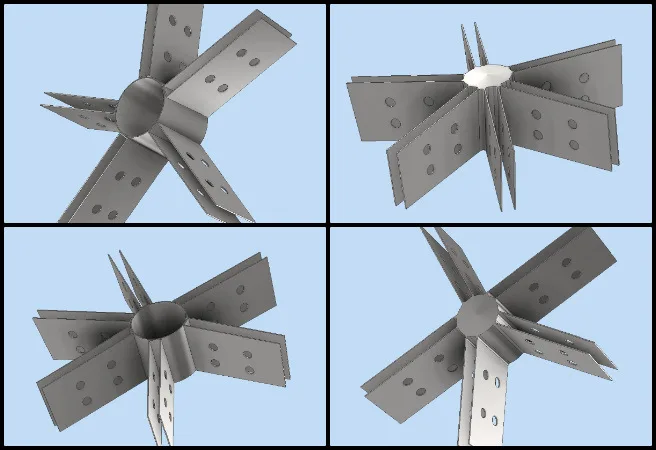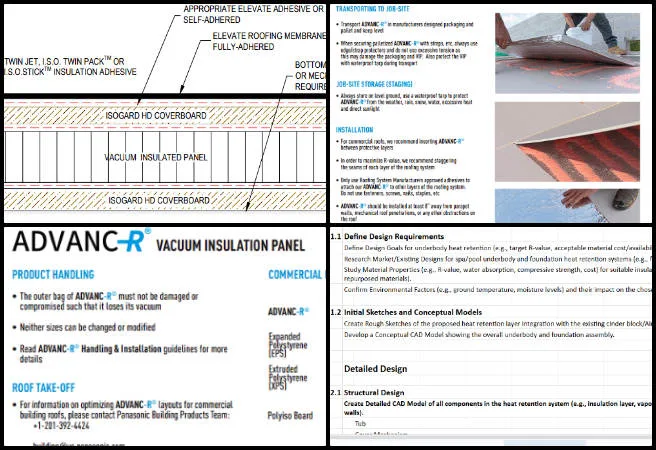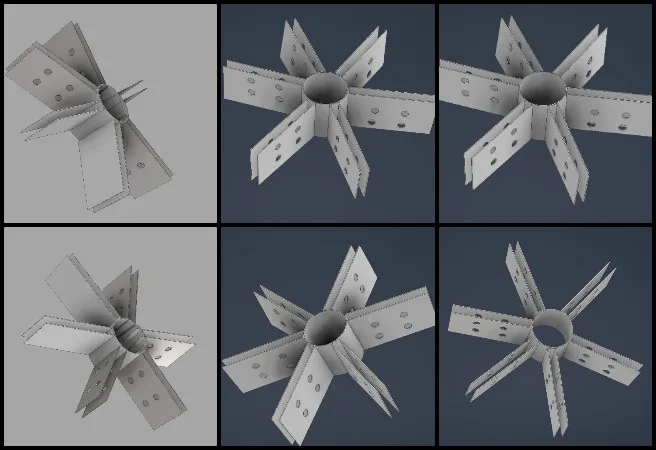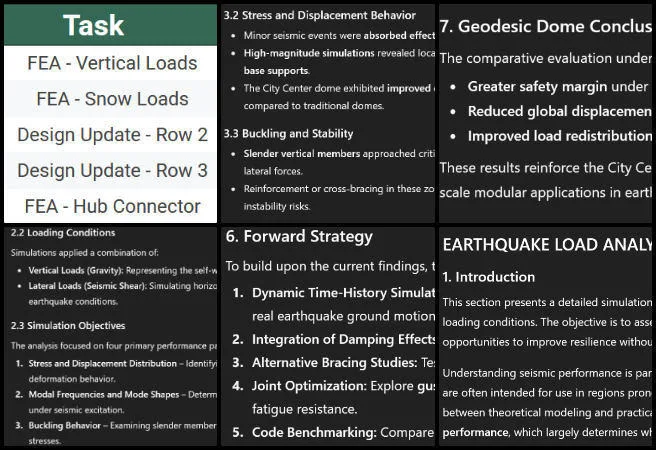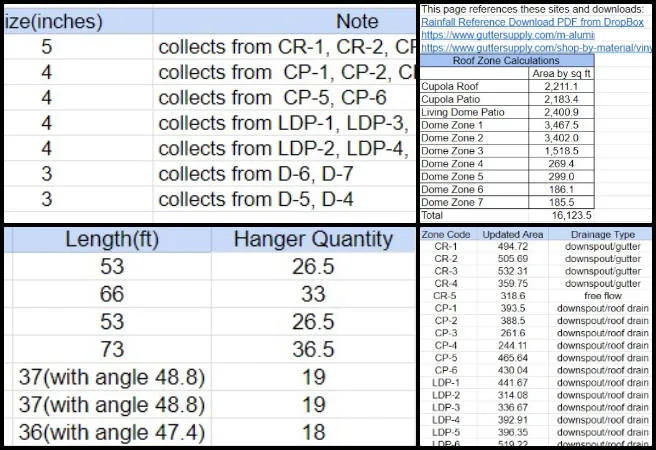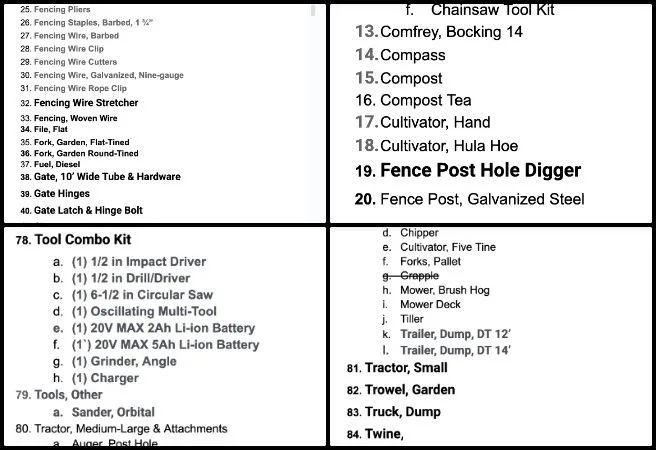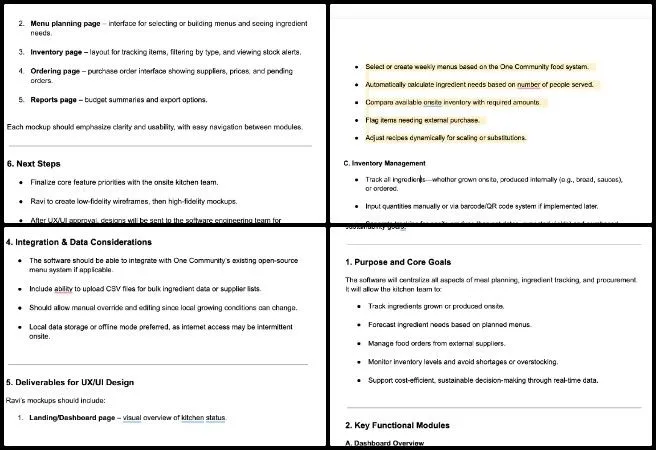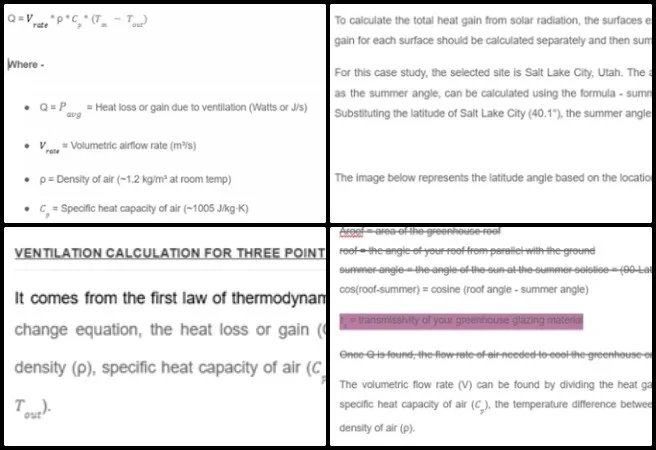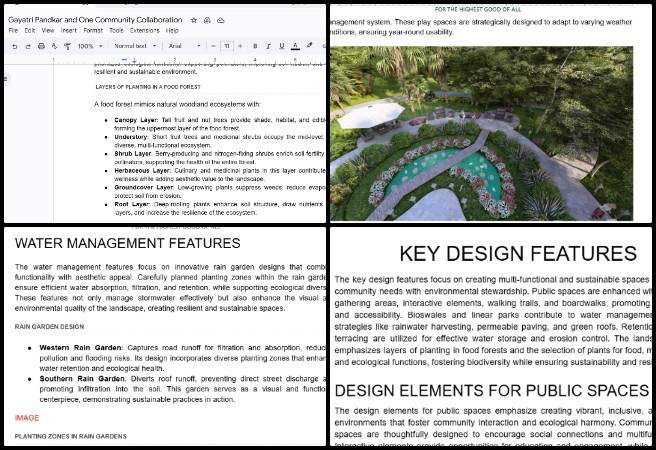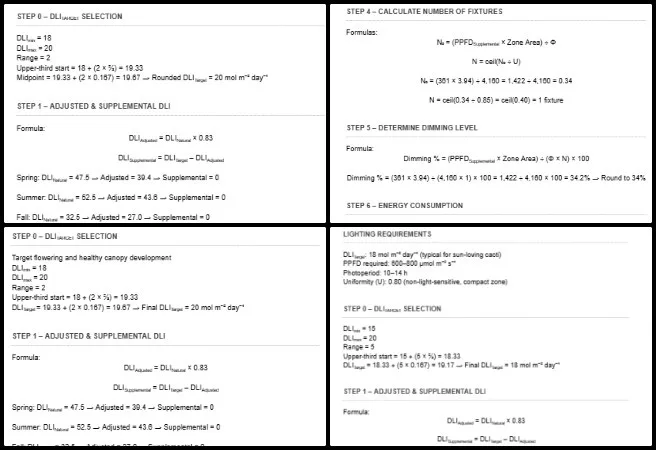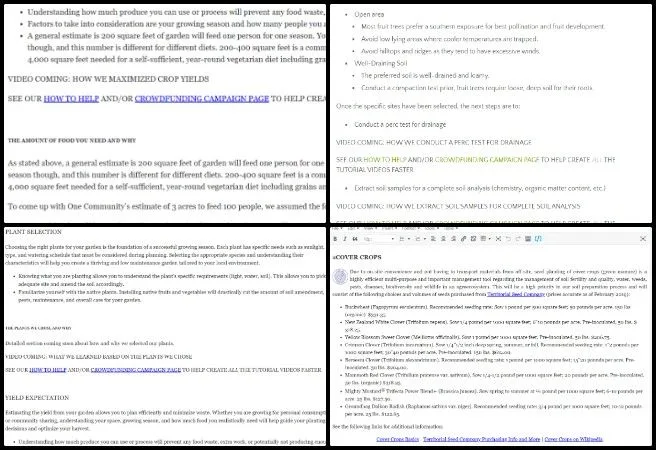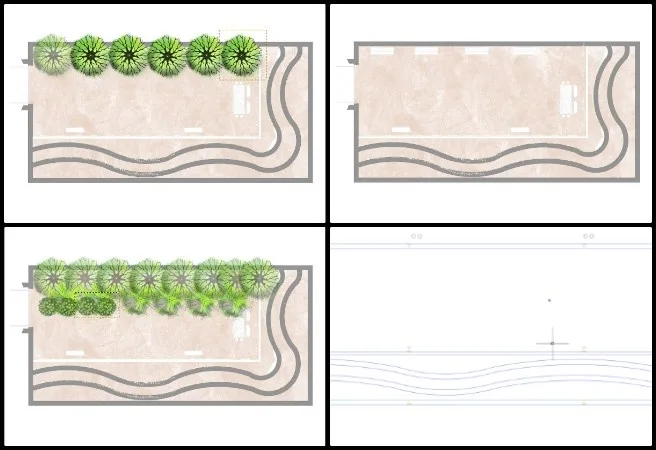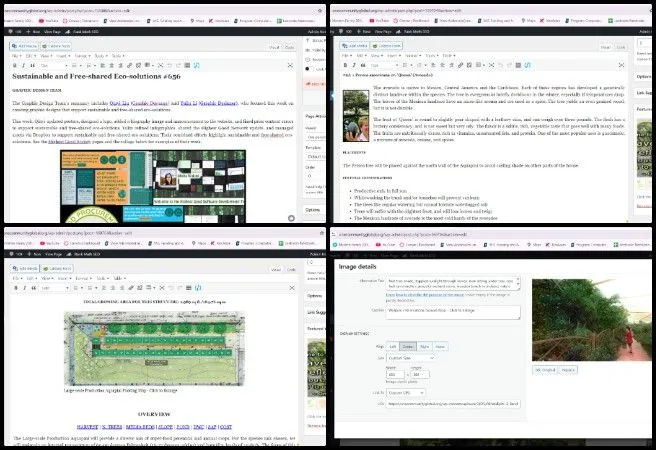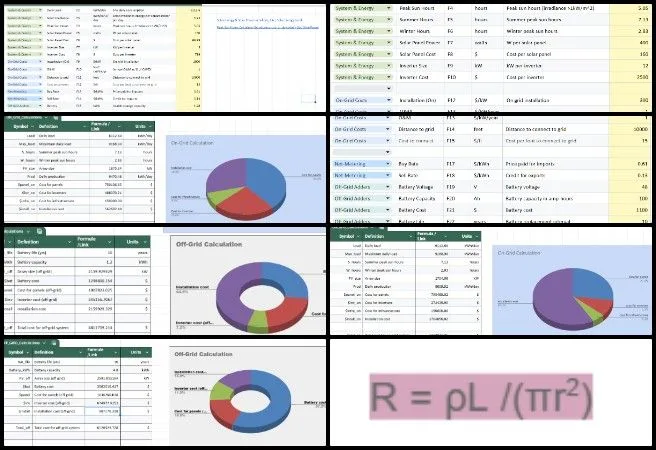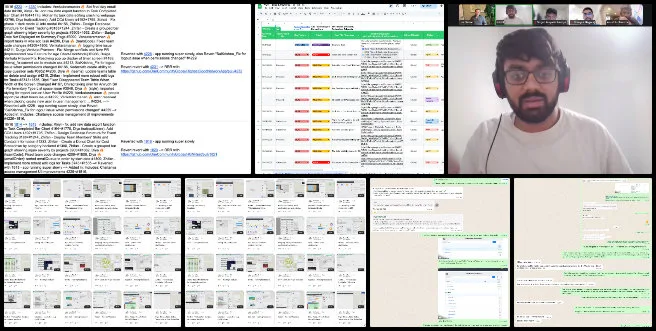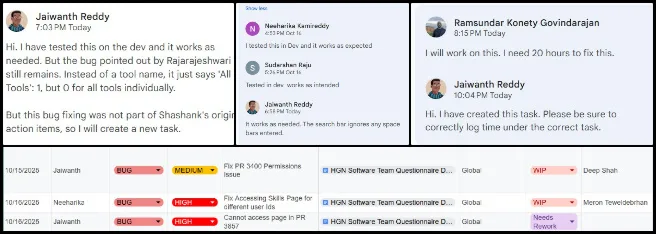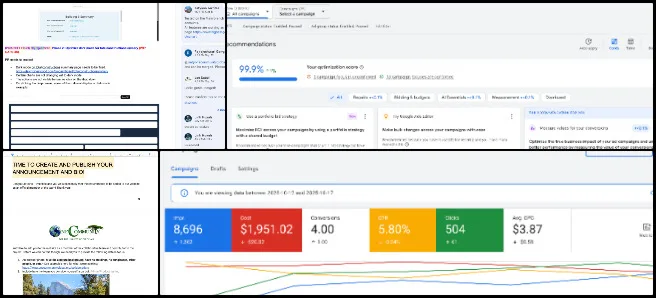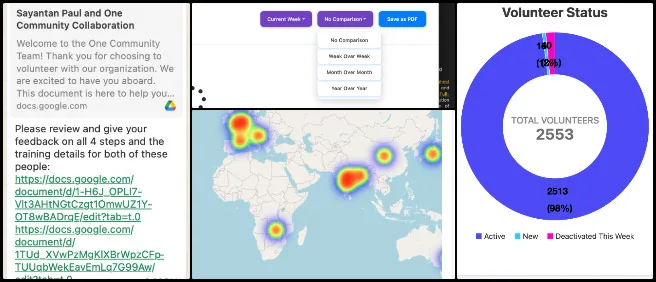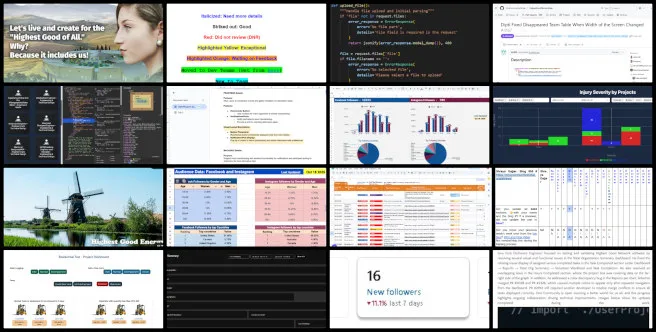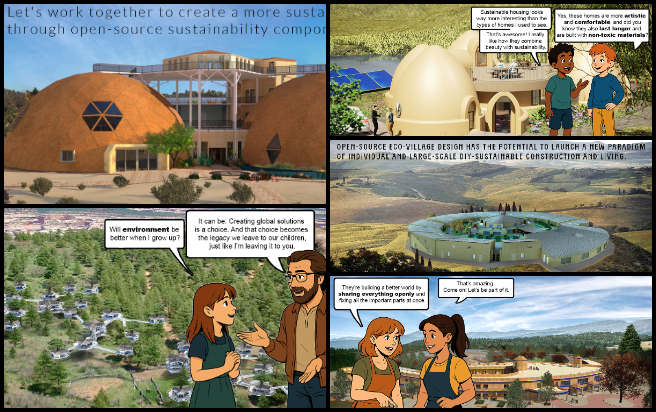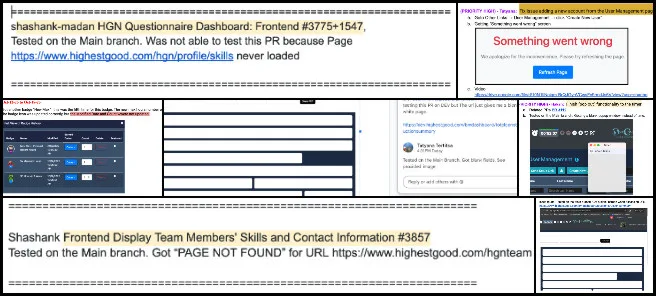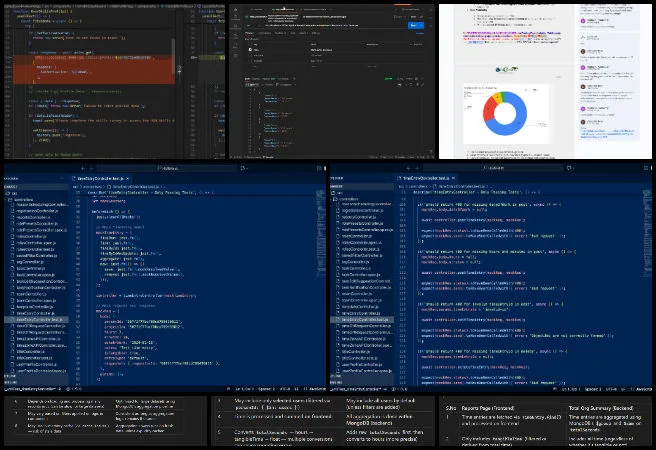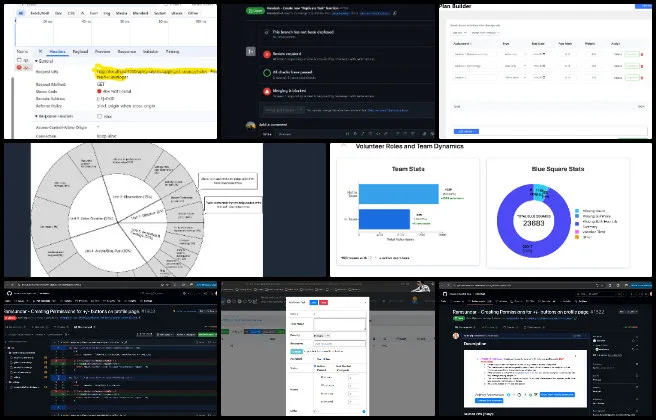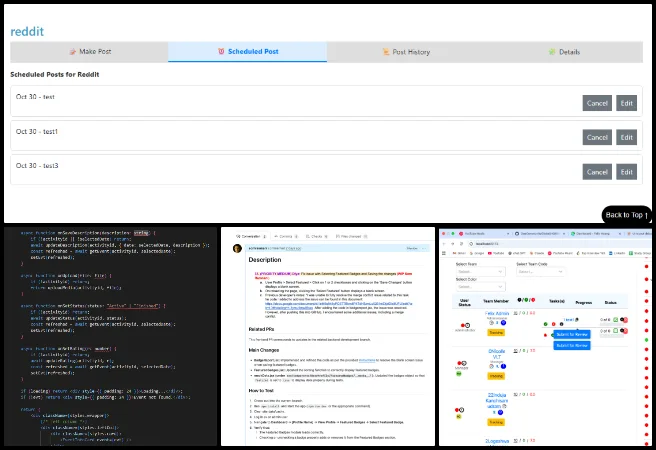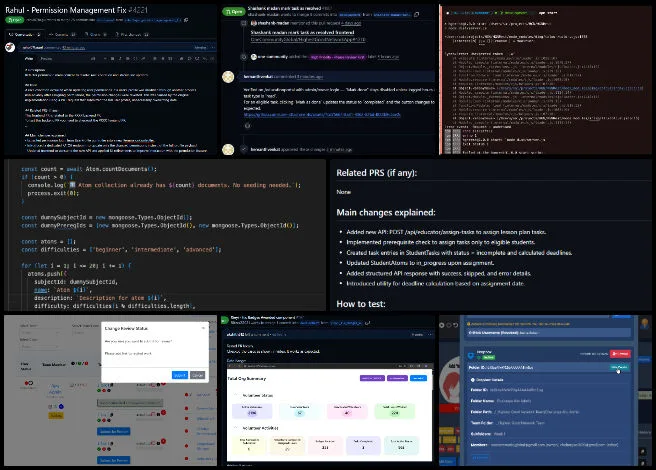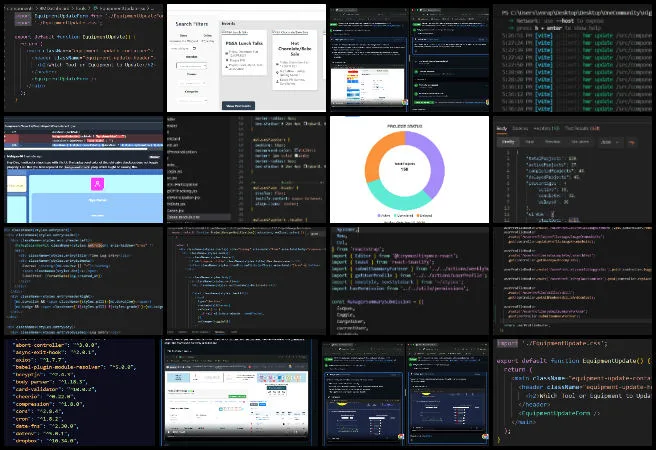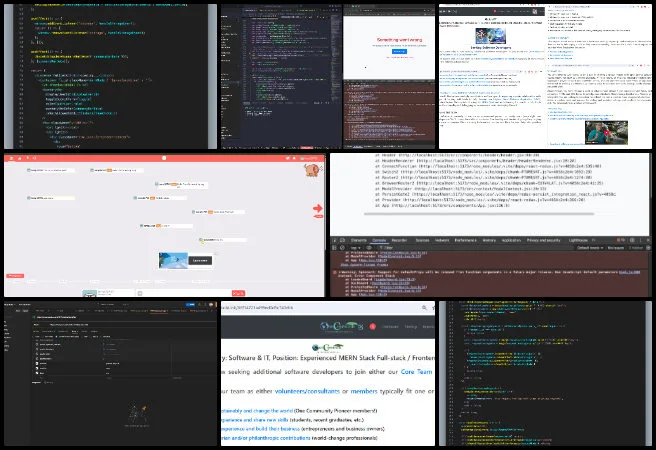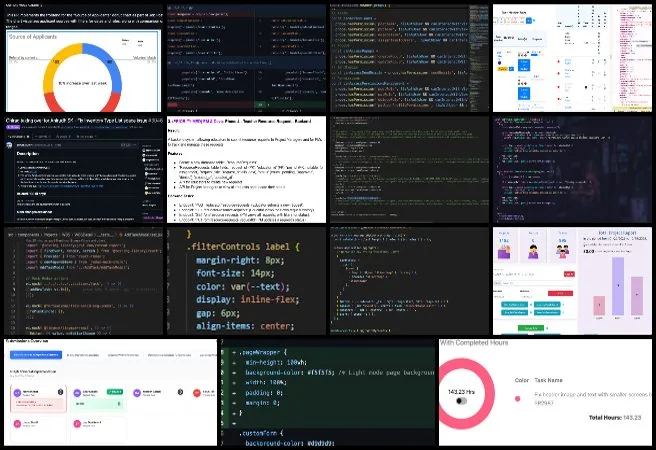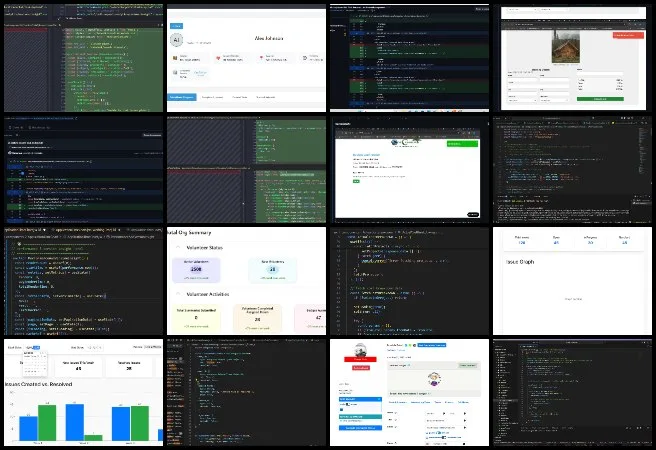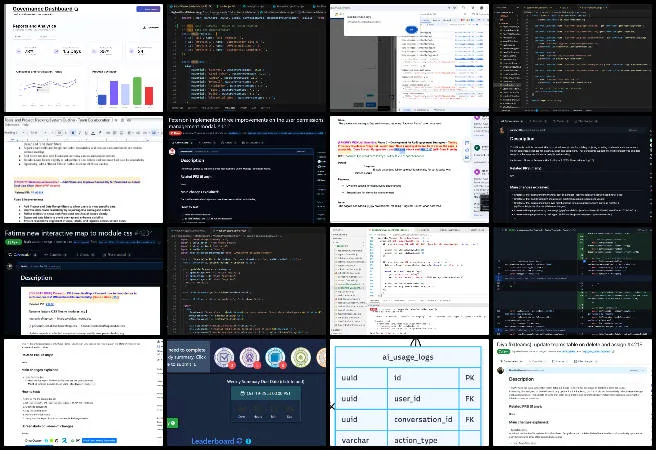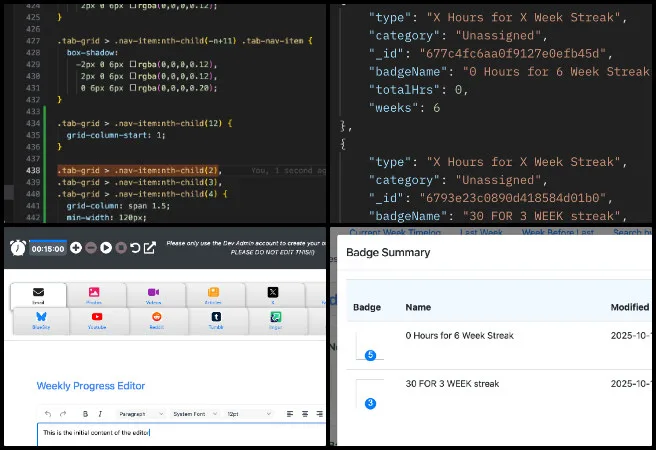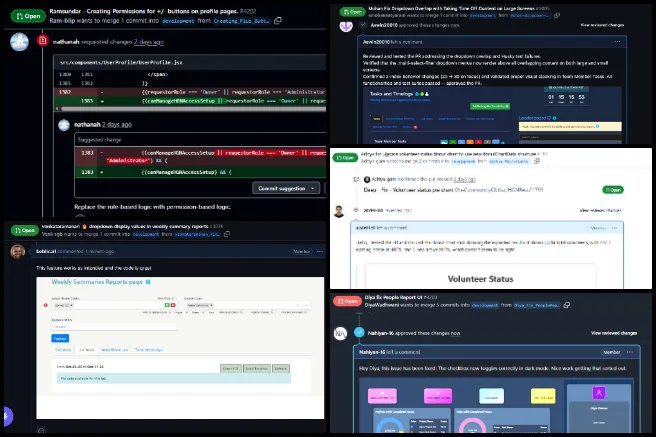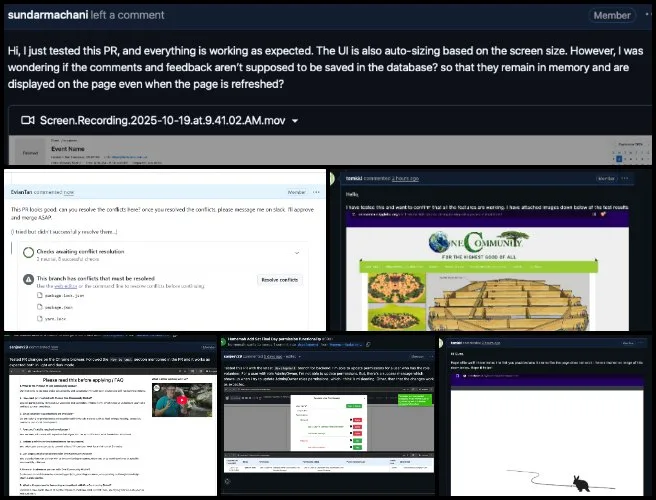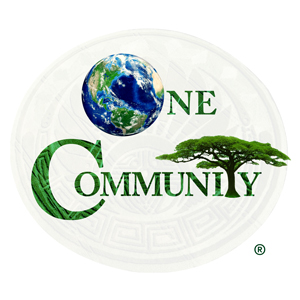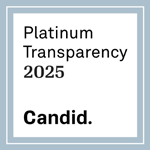Solutioneering The World We Want – One Community Weekly Progress Update #657
At One Community, we are solutioneering the world we want by developing integrated models for sustainable living that anyone can adopt. Our all-volunteer team combines innovative approaches to food, energy, housing, education, economics, social architecture, and fulfilled living into a practical, replicable framework. By sharing the complete process openly, we foster a global collaboration of teacher/demonstration hubs, regenerating our planet and evolving sustainability for The Highest Good of All.
- Here’s our project overview
- Here’s our world-change methodology
- Here’s how this becomes self-replicating
- Here’s how we are open source and free-sharing all the do-it-yourself designs
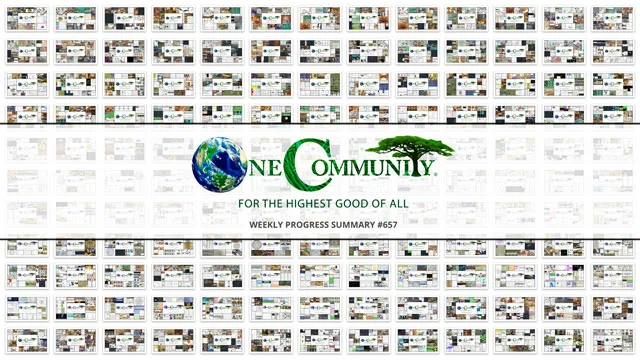
OUR MAIN OPEN SOURCE HUBS
Click on each icon to be taken to the corresponding Highest Good hub page.
One Community’s physical location will forward this movement as the first of many self-replicating teacher/demonstration communities, villages, and cities to be built around the world. This is the October 20, 2025 edition (#657) of our weekly progress update detailing our team’s development and accomplishments:
Solutioneering The World We Want
One Community Progress Update #657
DONATE | COLLABORATE | HELP WITH LARGE-SCALE FUNDING
CLICK HERE IF YOU’D LIKE TO RECEIVE AN EMAIL EACH WEEK WHEN WE RELEASE A NEW UPDATE
YOU CAN ALSO JOIN US THROUGH SOCIAL MEDIA
ONE COMMUNITY WEEKLY UPDATE DETAILS
HIGHEST GOOD HOUSING PROGRESS
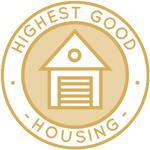 One Community is solutioneering the world we want through Highest Good housing that is artistic and beautiful, more affordable, more space efficient, lasts longer, DIY buildable, and constructed with healthy and sustainable materials:
One Community is solutioneering the world we want through Highest Good housing that is artistic and beautiful, more affordable, more space efficient, lasts longer, DIY buildable, and constructed with healthy and sustainable materials:
- Learn about: Our Upcoming Crowdfunding Campaign
- Learn about the different village models: 7 Sustainable Village Models
- Visit the open source portals for the first two: Earthbag Village OS Hub | Straw Bale Village OS Hub
This week, Ajay Adithiya Kumar Elancheliyan Tamilalagi (Mechanical Engineer) continued working on the ventilation system design for the Earthbag Village. He collected existing CAD models, created new ones, and set up an HVAC system configuration for the construction team based on last week’s bill of materials. Ajay assembled the models into the main structure file to verify proper alignment and integration, then developed a corresponding model for computational fluid dynamics (CFD) analysis to evaluate airflow and odor control performance. After encountering initial errors, he worked with Karthik to resolve the issues and successfully complete the simulation, ensuring there was no backflow of odors from the drainage system. This work continues to contribute to solutioneering the world we want through One Community’s collaborative design process. Below, you’ll find some images of this work.
Baraka Minja (Civil and Environmental Engineer Pr. Eng.) continued working on the Vermiculture Toilet drawings. This week, he worked on the communal shower drawings and produced typical elevation views for the north, south, west, and east sides of the structure. Baraka added a setting out layout drawing to show the four different locations of the communal shower relative to other structures and updated the section drawings to include additional details. His detailed work supports solutioneering the world we want through improved sustainable infrastructure. See below for some of the pictures.
Derrell Brown (Plumbing Designer) continued working on the Earthbag Village final MEP report by revising electrical documentation and detailing design and load calculations. He reviewed the latest electrical plans to refine the design process, finalized the load breakdown chart, and added details and images describing load specifications. Derrell also reviewed the entire report to proofread for grammatical accuracy and incorporated an overview section in preparation for the final review. His contributions play an essential role in solutioneering the world we want through efficient design documentation. See below for some of the pictures related to this work.
Fangting Xu (Interior Design Intern) continued working with ADA codes related to building connections for the Earthbag Village to ensure compliance with accessibility standards. This week, she reviewed Ketsia’s files with guidance from Jae, officially took over her assignments, hosted the group meeting to track team progress, and completed ADA drawings for the 3 Dome Cluster. She also reorganized ADA-related files for better coordination and managed communication regarding Ananya’s departure. Fangting’s consistent organization and leadership contribute to solutioneering the world we want through inclusive and accessible design. See below for some of the pictures related to this work.
Karthik Pillai (Mechanical Engineer) continued work on the Vermiculture Toilet, focusing on implementing design modifications proposed by Jae for the waste dumping mechanism. The design was updated based on feedback, and efforts continued to finalize the drawer design and complete the remaining adjustments to the system. Finite element analyses were also performed to validate the updated model. In parallel, Karthik collaborated with Ajay on the HVAC project, conducting flow simulations and computational fluid dynamics (CFD) studies. For the 4-dome roof cluster project, he made the necessary design changes and submitted the revised report to Jae for another review. His multidisciplinary work continues solutioneering the world we want through technical precision and collaboration. The related visuals are shown below.
Michaela Silva (Architect) continued developing details in the construction documents for the Earthbag Village. She focused on structural connections, creating details that show how both the wood beams and steel beams connect to an 8×8 wood column. Michaela also prepared details showing how the wood floor trusses connect to the steel beam using a 2×4 nailer placed on top, listing the selected Simpson Strong-Tie hangers. Her meticulous detailing supports solutioneering the world we want through strong, efficient, and replicable building design. Check out the construction detail visuals below.
Rishi Chakrapani (Mechanical Engineer) continued working on the Vermiculture Toilet. He completed research on sensors suitable for monitoring methane and ammonia levels in the vermiculture chamber, focusing on low-cost and readily available options, and prepared a report summarizing the identified sensor options. Additionally, finite element analysis (FEA) was performed to verify Joseph’s calculations, with a report outlining that the current design is acceptable with minor adjustments related to material strength considerations. Rishi’s engineering and research efforts play a vital part in solutioneering the world we want through affordable and practical innovations. See below for some of the pictures related to this work.
DUPLICABLE CITY CENTER PROGRESS
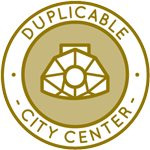 One Community is solutioneering the world we want through a Duplicable and Sustainable City Center that is LEED Platinum certified/Sustainable, can feed 200 people at a time, provide laundry for over 300 people, is beautiful, spacious, and saves resources, money, and space:
One Community is solutioneering the world we want through a Duplicable and Sustainable City Center that is LEED Platinum certified/Sustainable, can feed 200 people at a time, provide laundry for over 300 people, is beautiful, spacious, and saves resources, money, and space:
- Learn about this building and it’s function: Duplicable City Center Open Source Hub
This week, Andrew Tzu-Chien (Industrial Designer) continued working on the Duplicable City Center Dormer second-floor window. He analyzed the existing window design and documented various load paths, including dead and environmental loads, from multiple angles. He observed how these loads interact with the current structure and sketched diagrams illustrating the findings. Andrew also began developing a new window framing concept through sketches designed to improve insulation and structural stability. This open source Duplicable City Center project demonstrates solutioneering the world we want. For more details, refer to the image below.
Anjana Reddy (Architectural Designer) continued work on the Duplicable City Center by completing the second half of the landscape area, updating plant groupings based on the final planting plan and its polyculture concept. The process included refining plant placements, addressing model performance issues in Lumion, and resolving a temporary license problem that affected rendering progress. After these fixes, she completed the final landscape area and renders and uploaded the walk-around for review. This open source Duplicable City Center project contributes to solutioneering the world we want. Explore the landscape visuals in the image below.
Ayushman Dutta (Mechanical Engineer) continued working on the Duplicable City Center by reviewing the assembly instruction sheet, checking each step, and revising for accuracy. He documented the process step by step, re-verified the spreadsheet instructions, wrote detailed guidance for the row 2 hub connector, and adjusted the overall format to enhance clarity and usability. Ayushman continued iterating on the row 2 hub connector instructions throughout the week to ensure all steps were properly documented and easy to follow. This open source Duplicable City Center project demonstrates solutioneering the world we want. Review the connector analysis visuals below for more details.
Nikhil Bharadwaj (Mechanical Engineer) continued working on the Duplicable City Center dome assembly, training the team on the hub connector design process and outlining procedures to ensure consistency. He completed the hub connector designs for two connectors in row 5 (5.1 and 5.3), coordinated with Shreyas on the remaining two, integrated all four row 5 hub connectors into the complete dome assembly, and shared the updated model with Shreyas for beam trimming and verification. One Community’s open source Duplicable City Center is an example of solutioneering the world we want. The visuals below highlight his assembly progress this week.
Sandesh Kumawat (Mechanical Engineer) continued working on the City Center Natural Pool and Eco-spa Designs for the Duplicable City Center by completing the master task list, including workstreams, owners, dependencies, and near-term deliverables. He also reviewed Panasonic ADVANC-R vacuum insulation panel documentation to extract specs and handling constraints for insulation benchmarking. Key takeaways included R-66 center-of-panel performance, available sizes, Class A flame/smoke ratings, non-hazardous composition, service temperature limits, and critical handling/installation rules (no cutting or puncturing, avoid fasteners, protect in layered install, dry storage, keep clearances). These details inform insulation coverage targets, material screening, and assembly risk for the spa design. Discover One Community’s open source Duplicable City Center, which exemplifies solutioneering the world we want. See the visuals below for a closer look.
Shreyas Nagaraj (Design Engineer) continued working on the Duplicable City Center by updating the hub connector models. He reviewed the recorded meeting with Koushik and Nikhil to confirm the new constraints for Row 5, then implemented and tested the updates in Autodesk Inventor. He drafted the Row 5.2 model using instructional materials, finalized the updates, and shared the STEP file. Progress on Row 5.4 reached the halfway point midweek and was completed later. One Inventor crash required a restart before continuing. This open source Duplicable City Center project exemplifies solutioneering the world we want. For more details, refer to the image below.
Srujan Pandya (Mechanical Engineer) continued working on the Duplicable City Center report by updating the Earthquake section, refining model descriptions, and incorporating the latest data where available. He adjusted content based on prior discussions, ensured clear formatting and cross-referencing, and updated the tracking table to reflect checks and progress. Srujan then sent the revised report to Jae for a second review and feedback. The Duplicable City Center demonstrates solutioneering the world we want through open source solutions that can guide people. The images below illustrate aspects of this work.
Vineela Reddy Pippera Badguna (Mechanical Engineer) continued contributing to the Duplicable City Center and Earthbag Village by updating calculations in the Google spreadsheet to reflect the latest greywater system modifications. She reviewed related website content to align revisions with the new data. Vineela also incorporated changes from revised downspout placements and adjusted gutter sizes accordingly, cross-checking each calculation for accuracy and consistency. This open source Duplicable City Center project contributes to solutioneering the world we want. See the updated rainwater catchment data and design visuals below.
HIGHEST GOOD FOOD PROGRESS
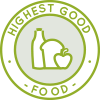 One Community is solutioneering the world we want through Highest Good food that is more diverse, more nutritious, locally grown and sustainable, and part of our open source botanical garden model to support and share bio-diversity:
One Community is solutioneering the world we want through Highest Good food that is more diverse, more nutritious, locally grown and sustainable, and part of our open source botanical garden model to support and share bio-diversity:
- Learn about the structures: Hoop House Hub | Aquapini & Walipini Open Source Hub
- See what we’ll be growing: Gardens & Hoop Houses | Large-scale Structures | Food Forest | TA
This week, the core team continued working on the Master Tools, Equipment, and Materials and Supplies List for the Large Garden and Botanical Garden. The team established a comparison protocol for creating the Large Garden project list using the Master TEMS document, involving a comprehensive review of the complete list and cross-referencing project acronyms. This protocol now serves as the standard format for listing Tools, Equipment, and Materials/Supplies for all future projects. Furthermore, upon completion of each individual project listing, the corresponding list headings will be alphabetized on the Master TEMS document. The Highest Good Food initiative is a key component of One Community’s open source plans, focused on solutioneering the world we want and exemplifies the organization’s commitment through innovative design and implementation. Below are some images showcasing this work.
Chelsea Mariah Stellmach (Project Manager) continued her work on the Transition Food Self-sufficiency Plan. She developed a detailed build proposal for the Transition Kitchen Management software to guide the UX/UI design process, outlining the system’s purpose, key functions, and design priorities. The proposal specifies that the system will be built from scratch and primarily used by one on-site operator. Chelsea defined five main modules for the interface: Dashboard Overview, Menu Planning and Forecasting, Inventory Management, Ordering and Procurement, and Reporting and Budgeting. She described how each feature should support onsite food production, supplier coordination, and budget tracking to reduce waste and improve efficiency. The document also specifies user experience requirements, including a simple layout, responsive design for laptop or tablet use, and visual consistency with One Community’s sustainability-focused branding, as well as integration notes for onsite data management, CSV uploads, and potential offline access. Chelsea’s findings provide a clear direction for engineers and UX/UI designers to begin building an adaptable, efficient inventory system aligned with the project’s operational and environmental objectives. As an essential aspect of One Community’s open source goals, the Highest Good Food initiative supports solutioneering the world we want. The following images provide a view of her contributions.
Dirgh Patel (Mechanical Engineer) continued assisting with the Climate Battery design updates. He edited the final report for the greenhouse project, adding a detailed explanation of how the volumetric flow rate equation is derived, how it relates to solar heat gain, and the meaning of each term. Dirgh also updated all titles in the thermal simulation section and added explanations showing the relationship between heat gain by radiation, ventilation, and overall thermal performance. He expanded the analysis following the volumetric flow rate calculation to clarify the airflow needed to maintain the desired internal temperature of the greenhouse. In addition, Dirgh revised the “Design for Heating” section, providing detailed explanations for the calculations and incorporating color-coded formatting to distinguish elements such as heat gain by radiation and the summer angle. One Community’s open source mission is powerfully reflected in the Highest Good Food initiative, which is focused on solutioneering the world we want. See the images below to review this week’s updates.
Gayatri Pandkar (Architect) continued contributing to the Highest Good Food initiative. She completed the detailed reports for the southeast and southwest areas, organizing collected notes into the designated report template and incorporating renderings for the southwest area to visually represent key elements. The work focused on clearly structuring and presenting the information within the report format. The Highest Good Food initiative is a key part of One Community’s open source platform, focused on sustainable and participatory development while supporting solutioneering the world we want. Visual examples from her work are presented below.
Jay Nair (BIM Designer) continued on Aquapini and Walipini Planting and Harvesting documents. He updated lighting energy calculations for the Walipini 1 greenhouse and verified data accuracy using the latest fixture specifications. Jay also standardized the document, aligning its format, structure, and presentation with required guidelines to maintain consistency across project documentation. The Highest Good Food initiative is a key part of One Community’s open source platform, focused on sustainable and participatory development while supporting solutioneering the world we want. See below for pictures related to this work.
Keerthi Reddy Gavinolla (Software Developer) continued working on the Highest Good Food page. She completed the Soil Amendment and Initial Off-grid Site Preparation webpage by finalizing sections, adjusting formatting, and adding links to images and related content. Keerthi also refined spacing, headings, and bullet points for better presentation and consistency, and completed her admin tasks for the week. Built on One Community’s open source foundation, the Highest Good Food initiative is dedicated to solutioneering the world we want, empowering communities through self-sustaining systems. Visual examples of her work are shown below.
Nitin Parate (Architect) continued contributing to the Highest Good Food initiative, focusing on developing and rendering the Walipini 2 plan. He created a base file to establish the layout framework for layers, planting zones, and key design components, ensuring alignment with project requirements. Rendering work in GIMP applied initial colours to define planting zones, pathways, and structural boundaries, while layers were managed to streamline updates and maintain precision. The visuals were reviewed for consistency with existing drawings and design intent. The Highest Good Food initiative is a key part of One Community’s open source platform, promoting regenerative and participatory development while solutioneering the world we want. Images below showcase his contributions.
Pallavi Deshmukh (Software Engineer) continued working on the Aquapini and Walipini Planting and Harvesting. She completed three interviews, added Zenapini #2 content from Silin, corrected misplaced data, and verified all images and links before submitting updates for review. Pallavi also reviewed the page based on Jae’s feedback, created new content for blog 656, and collaborated with teammates to ensure consistency and clarity. In alignment with One Community’s open source objectives, the Highest Good Food project integrates the concept of solutioneering the world we want into a larger vision of regenerative living. Her contributions are highlighted in the collage below.
Shivangi Varma (Volunteer Architectural Designer And Planner) continued contributing to the Highest Good Food initiative. She reviewed feedback for the three pages (Highest Good Food Infra, Open Source Hub, and Planting and Harvesting) and for the first cut of the masterplan render. Shivangi also developed the initial diagram showing differences between Walipini, Aquapini, and Zenipini. The Highest Good Food initiative plays a leading role in One Community’s open source platform by promoting sustainable and participatory development focused on solutioneering the world we want. Below are visuals highlighting this work.
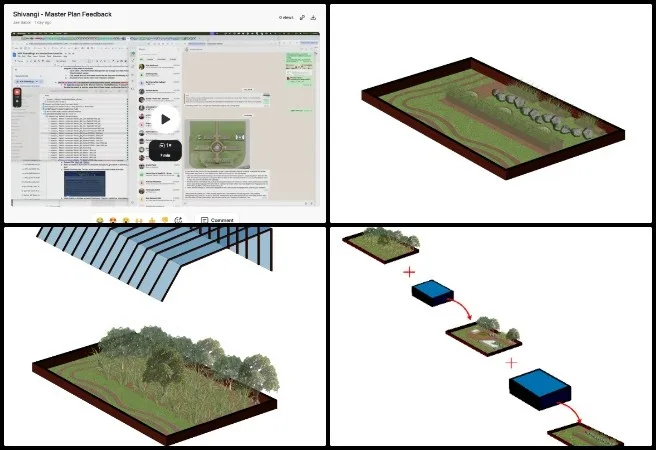
HIGHEST GOOD ENERGY PROGRESS
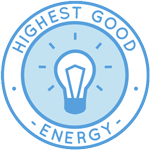 One Community is solutioneering the world we want through Highest Good energy that is more sustainable, resilient, supports self-sufficiency and includes solar, wind, hydro and more:
One Community is solutioneering the world we want through Highest Good energy that is more sustainable, resilient, supports self-sufficiency and includes solar, wind, hydro and more:
- Learn about the open source sustainable-energy foundations: Solar, Hydro, and Wind
- Explore our research into the most sustainable products and companies for saving water and energy: Insulation, Eco-laundry, Lightbulbs and Light Bulb Companies, Doors and Door Companies, Windows and Window Companies, Toilets, Faucets and Faucet Accessories, Urinals, and more.
This week, the core team contributed to the Highest Good Energy initiative. They finished modifying a simple calculator tool to estimate total off-grid versus grid-tie costs and shared the tool with Shravan for integration of grid connection and total cost once he is available next week. The team also began a final read-through of the solar microgrid page to prepare it for publication. The Highest Good Energy initiative plays a leading role in One Community’s open source platform by promoting sustainable and participatory development focused on solutioneering the world we want. Below are images related to this project.
HIGHEST GOOD EDUCATION PROGRESS
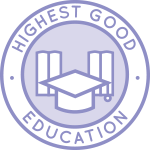 One Community is solutioneering the world we want through Highest Good education that is for all ages, applicable in any environment, adaptable to individual needs, far exceeds traditional education standards, and more fun for both the teachers and the students. This component of One Community is about 95% complete with only the Open Source School Licensing and Ultimate Classroom construction and assembly details remaining to be finished. We’ll report on the final two elements to be finished as we develop them. With over 8 years of work invested in the process, the sections below are all complete until we move onto the property and continue the development and open sourcing process with teachers and students – a development process that is built directly into the structure of the education program and everything else we’re creating too:
One Community is solutioneering the world we want through Highest Good education that is for all ages, applicable in any environment, adaptable to individual needs, far exceeds traditional education standards, and more fun for both the teachers and the students. This component of One Community is about 95% complete with only the Open Source School Licensing and Ultimate Classroom construction and assembly details remaining to be finished. We’ll report on the final two elements to be finished as we develop them. With over 8 years of work invested in the process, the sections below are all complete until we move onto the property and continue the development and open sourcing process with teachers and students – a development process that is built directly into the structure of the education program and everything else we’re creating too:
- Program Overview: Education Open Source Hub
- How the components work together in designing human orchestrated eco-abundance: How to use the Education for Life Program
- Lesson Plans for Life – Lesson Plans How-to
- Foundations of Outstanding Leaders, Teachers, and Communicators
- Curriculum for Life
- Teaching Strategies for Life
- Learning Tools and Toys for Life
- Evaluation and Evolution
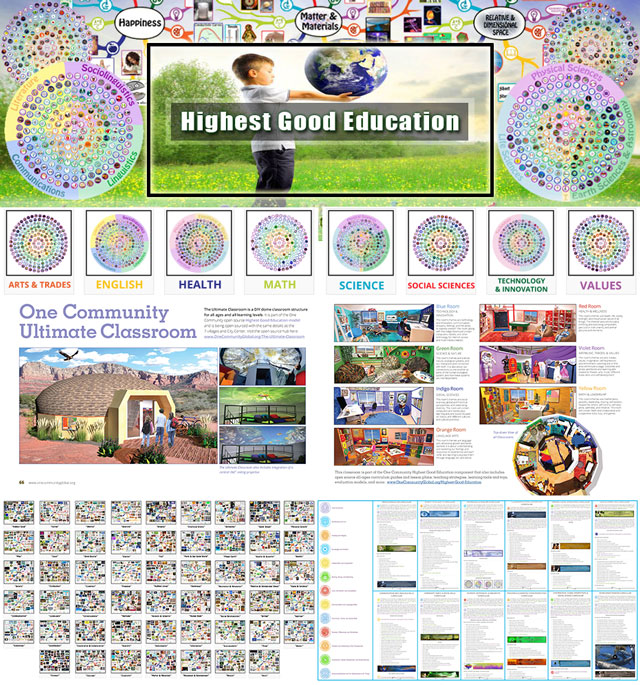
Highest Good Education: All Subjects | All Learning Levels | Any Age – Click image for the open source hub
HIGHEST GOOD SOCIETY PROGRESS
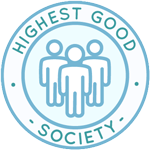 One Community is solutioneering the world we want through a Highest Good society approach to living that is founded on fulfilled living, the study of meeting human needs, Community, and making a difference in the world:
One Community is solutioneering the world we want through a Highest Good society approach to living that is founded on fulfilled living, the study of meeting human needs, Community, and making a difference in the world:
- Read the Highest Good society overview: Highest Good Society
- Learn about the model for fulfilled living and sharing: A Day in the Life
- Learn about the 4 economic models: RBE | For-profit | Non-profit | Entrepreneurship
- Learn about our open source community collaboration and management software: The Highest Good Network
This week, the core team completed over 48 hours managing volunteer work reviews, handling emails, overseeing social media accounts, supporting web development, identifying new bugs, and integrating bug fixes for the Highest Good Network software, as well as interviewing and onboarding new volunteer team members. They also produced and integrated the video above, highlighting how solutioneering the world we want serves as the foundation of One Community’s broader mission. The following images showcase highlights of this work.
Jaiwanth Reddy Adavalli (Project Manager) continued developing the Job Applicants page and key components of the Highest Good Network, tracking updates in the software team management documents to assign and monitor task status. He worked on the PR Analytics Dashboard and Questionnaire Dashboard by testing multiple components and creating action items to address bugs and improve functionality. Jaiwanth also tested multiple pull requests in the Highest Good Network software and, as a member of the pull request review team, reviewed submissions from his assigned volunteer team. This work supports One Community’s commitment to solutioneering the world we want. The images below highlight his contributions.
Rajrajeshwari Gangadhar Sangolli (Data Analyst) continued working on Google Ads management and strategy evolution of the Highest Good Network. She reviewed multiple pull requests to verify functionality, provided feedback, and suggested improvements for Shreya’s work. She completed the Google Ads Search Certification with a score of 89%, logged two previously identified bugs, and added them as tasks on the HGN page. Rajrajeshwari analyzed recent ad performance, added new keywords, implemented Google’s optimization recommendations, and updated titles and SEO metadata for contributors. She also tested PRs, clarified questions with team members, and recorded results in a new tracking sheet. This project supports One Community’s commitment to demonstrating solutioneering the world we want. The images below highlight key aspects of her work.
Yagna Reddy Badvel (Data Analyst and Team Administrator) continued working on the Summary Dashboards and Weekly Report page on the Highest Good Network. He reviewed trainee submissions and validated dashboard comparison filters to ensure accurate data across different date ranges. Yagna verified Month-over-Month and Year-over-Year calculations, export functionality, and visual consistency within the dashboards. He also reviewed trainee Shreya Gajjar’s submission, checking formatting, image quality, and adherence to admin standards while providing detailed feedback. Additionally, he cross-checked assigned training documents, verified Dropbox folder organization, and ensured all review tasks were current. This work supports One Community’s commitment to solutioneering the world we want. The images below highlight his contributions.
ADMINISTRATION TEAM
The Administration Team’s summary, covering their work on the Highest Good Network, was managed by Prudhvi Marpina (Data Analyst) and includes Ashutosh Mishra (Software Engineer), Divanshu Bakshi (Team Admin), Indra Anuraag Gade (Software Engineer and Team Administrator), Keerthana Chitturi (System Administrator), Mridul Bhushan (Volunteer Project Strategy Analyst and Team Administrator), Neeharika Kamireddy (Data Analyst), Olawunmi “Ola” Ijisesan (Administrative and Management Support), Olimpia Borgohain (Data Analyst and Team Administrator), Priyanshi Sharma (Data Analyst and Team Administrator), Rachna Malav (Data Analyst), Rajeshwari Bhirud (Administrator), Rishi Sundara (Quality Control Engineer and Team Administrator), Rishitha Adepu (Administrator), Sai Suraj Matta Veera Venkata (Business Data Analyst), Samhitha Are (Administrator), Shreya Gajjar (Volunteer Data Analyst), and Sudarshan Raju Chintalapati Venkata (Data Analyst). The Administration Team supports the Highest Good Network, a tool designed to manage and objectively measure progress while building open-source solutions for global sustainability. Through administrative support, documentation, testing, training, recruiting, analytics, and content management, the team directly contributes to solutioneering the world we want, aligning with One Community’s mission to build a replicable and sustainable future model.
This week, Ashutosh enhanced model workflows by converting structured data into paragraph formats, tested multiple Hugging Face agentic models, finalized front-end dark and light modes, and completed API design for Mistral 7B. This work contributes to One Community’s commitment to solutioneering the world we want. Divanshu created and published Mastodon posts, documented bugs and feature improvements in the HGN Bugs II file, and streamlined issue tracking. Indra managed the Code Crafters weekly update, refined the Twitter Analytics Dashboard, resolved formula errors, and provided training feedback. This work supports One Community’s mission of solutioneering the world we want. Keerthana reviewed team submissions, maintained folder organization, added action items to Phase 3 documents, and guided two new admins. Mridul validated weekly summaries, prepared Blog #656 for publication with SEO updates, and reviewed admin training submissions. Neeharika assigned software tasks, tracked contributors’ progress, tested PR dashboards, logged new issues, and completed admin duties. Ola supervised PR managers, ensured data accuracy in the Highest Good Network spreadsheet, and helped establish new folder structures. Olimpia reviewed volunteer documents, addressed admin feedback, handled LinkedIn analytics, and created updated visual graphs.
Priyanshi tested Phase 2 PRs, compiled volunteer summaries, and refined formatting based on mentor feedback. Rachna reviewed old emails, revisited previous tasks, and monitored One Community webpages. Rajeshwari managed Blog #653, edited WordPress content, completed the HGN questionnaire, and tested the BM Dashboard. Rishi reviewed pull requests, followed up on contributors, merged blogs into Blog #656, and completed SEO tasks. This effort reflects One Community’s dedication to solutioneering the world we want. Rishitha drafted and finalized the weekly blog, supported new admin training, updated bios, and maintained Threads activity. Sai Suraj focused on Facebook and Instagram analytics, updated dashboards, organized content, and published SEO-optimized pages. Samhitha updated Phase 3 documentation, tracked testing results, logged new issues, and maintained project accuracy. Shreya finalized Blog #655, reformatted summaries, standardized titles, and corrected grammar. Sudarshan managed the Alpha Software Team’s blog, tested PRs, tracked dashboard performance, coordinated meetings, and provided feedback to admins in training. To learn more about how this work contributes to One Community’s vision of solutioneering the world we want, visit the Highest Good Society and Highest Good Network. Highlights of the team’s contributions are shared in the collage below.
GRAPHIC DESIGN TEAM
The Graphic Design Team’s summary includes Qinyi Liu (Graphic Designer) and Yulin Li (Graphic Designer), who focused this week on creating graphic designs that support solutioneering the world we want. This week, Qinyi refined previous posters based on feedback, adjusted logo dimensions, and updated the file. She also created new characters using ChatGPT and MidJourney to design posters supporting solutioneering the world we want, focusing on layout, copy, and color. Yulin worked on visual communication, creating social media images aligned with One Community’s sustainability goals. She shared the solutioneering the world we want announcement, managed assets via Dropbox, and joined weekly reviews to track progress. Their combined efforts highlight solutioneering the world we want. See the Highest Good Society pages and the collage below for examples of their work.
HIGHEST GOOD NETWORK PROGRESS
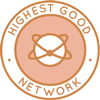 One Community is solutioneering the world we want through open source Highest Good Network® software that is a web-based application for collaboration, time tracking, and objective data collection. The purpose of the Highest Good Network is to provide software for internal operations and external cooperation. It is being designed for global use in support of the different countries and communities replicating the One Community sustainable village models and related components.
One Community is solutioneering the world we want through open source Highest Good Network® software that is a web-based application for collaboration, time tracking, and objective data collection. The purpose of the Highest Good Network is to provide software for internal operations and external cooperation. It is being designed for global use in support of the different countries and communities replicating the One Community sustainable village models and related components.
- Learn about our open source community collaboration and management software: The Highest Good Network
This week, the core team tested HGN pull requests and confirmed 11 fixed PRs. This effort highlights One Community’s commitment to solutioneering the world we want. The following items were not fixed: created actual vs. planned expense bar chart #3456, Phase 2 financials summary cards #3365, HGN Questionnaire Dashboard: Frontend #3775 and #1547, fix logging error #3822, and Frontend Display Team Members’ Skills and Contact Information #3857. They reviewed assigned badges for “Tester One” and logged 30 hours to test the “New Max” and “30 Hours in Week” badges. Additionally, they reported two bugs: “Finish ‘pop out’ functionality to the timer” and “Fix issue adding a new account from the User Management page.” They assigned the task “Finish ‘pop out’ functionality to the timer” with 25 hours to a volunteer. See the Highest Good Society and Highest Good Network pages for more on how this work strengthens solutioneering the world we want. See the collage below for an overview of this team’s contributions.
ALPHA SOFTWARE DEVELOPMENT TEAM
The Alpha Team, working on the Highest Good Network software, was managed by Lin Khant Htel (Frontend Software Developer). The team includes Carlos Martinez (Software Developer), Nikita Kolla (Full Stack Developer) and Meron Qelati (Software Engineer). The Highest Good Network software is a key part of sustainable and free-shared eco-solutions, helping track and measure progress toward solutioneering the world we want. The software supports social architecture, construction, production, and maintenance processes that contribute to the open source project and resilient ecosystems. Designed to be portable and scalable, the Highest Good Network software is well suited for off-grid and sustainable living communities. This project reflects One Community’s open source commitment to advancing the idea of solutioneering the world we want to build.
This week, Lin reviewed PR #1765, tested it on a local machine to confirm all test cases passed, and reviewed weekly summaries, photos, and videos submitted by Alpha Team members. This effort reflects One Community’s dedication to solutioneering the world we want. Carlos completed the donut chart by ensuring the new API routes functioned correctly with the chart component for accurate applicant analytics, resolved merge conflicts and sonar errors to enable testing by other developers, and began optimizing dark mode on the Total Construction Summary Dashboard, adjusting related components for consistent appearance and functionality.
Meron completed the assigned task for the HGN Questionnaire Dashboard after resolving permission issues that prevented branch access to the remote repository. He pushed the branch and created a pull request now pending final approval. This contribution advances One Community’s vision of solutioneering the world we want. His task involved adding a frontend feature to display the top 15 community members ranked by selected skill criteria with clickable email and Slack details, hover messages for private information, color-coded scores, and a redirect button to the Community Members page. He then fixed the user profile skills dashboard rendering issue caused by blocked frontend API requests due to authorization restrictions on the staging server, tracing the issue to a hardcoded local endpoint and implementing a dynamic configuration using process.env.REACT_APP_APIENDPOINT for environment-based flexibility while testing staging connectivity. This progress strengthens One Community’s focus on solutioneering the world we want. Nikita continued work on the “Total Org Summary: Fix stats accuracy (NEW)” task, focusing on discrepancies between statistics displayed on the Total Org Summary and Reports pages, investigating backend causes of inconsistent time allocation data, and extending the analysis to identify other fields showing similar inconsistencies. See the Highest Good Society and Highest Good Network pages for more on how this contributed to the idea of solutioneering the world we want. See the collage below to view the team’s work.
BINARY BRIGADE SOFTWARE DEVELOPMENT TEAM
The Binary Brigade Team, presenting their work on the Highest Good Network software, was managed by Nikhil Routh (Software Engineer) and included Zoha Khan (Software Engineer), Kanishk Agarwal (Software Engineer), Srushti Patel (Software Developer), Ramsundar Konety Govindarajan (Software Engineer), Harsha Rudhraraju (Software Engineer), Sourabh Bagde (Software Developer), Xinyi Zhou (Developer), Taariq Mansurie (Full Stack Developer), and Amalesh Arivanan (Software Engineer). The Highest Good Network software is our tool for managing and objectively measuring progress, ensuring that all contributions are tracked, aligned with our mission, and demonstrating solutioneering the world we want.
This week, Amalesh implemented the “Replicate Task” functionality, allowing admins and owners to duplicate a task and assign it to multiple individuals listed as Resources. Each selected individual receives their own copy of the task with all hours and task details copied while preserving existing shared-task behavior. He added a confirmation modal, updated backend logic through PR 1796, tested the implementation, documented the process, and maintained time tracking and access compliance. This progress strengthens One Community’s focus on solutioneering the world we want. Harshavarma focused on cleanup and completion tasks for the Application Page/Function, resolving pending issues and validating multiple frontend and backend pull requests, including 4195 + 1798, 3889 + 1656, 3886 + 1654, 4091, 3964, 4208, 3892, 3977, and 1636. He verified functionality, identified issues with the application count mismatch, date filter closure, and backend “All” filter behavior, created new tasks for unresolved PRs, and tracked progress through completion. This update showcases One Community’s active role in solutioneering the world we want. Kanishk worked on Phase 4 of the Task Comments Frontend, implementing a React-based comment system within the Education Portal’s task upload component. He created CommentBox, CommentList, and Toast components with dark mode support, localStorage persistence, inline validation, and delete functionality, addressing authentication, styling, and responsive design issues. This project plays a part in One Community’s journey toward solutioneering the world we want.
Nikhil migrated legacy CSS files to the CSS Modules format, updated Community Portal, BM Dashboard, and Teams components, modified import statements and className references, reviewed PR 3768, tracked migration progress, and investigated MongoDB timeouts on the backend development branch and time logging issues in production. This contribution helps advance One Community’s shared purpose of solutioneering the world we want. Ram (Ramsundar Konety Govindarajan) made updates to PR 1822 and PR 4202, refining role-based permissions so that only the Owner has access to the HGN Add Access button and related role assignments, and fixed PR 3857 to correctly display a ranked list of team members by skill rating with functional contact links and privacy handling. Sourabh enhanced the Slashdot module by implementing a scheduler for drafted posts, enabling users to set publication times, edit scheduled content, and manage saved data through localStorage while identifying two remaining bugs involving empty fields and unrestricted past-date selection. This work represents another step in One Community’s process of solutioneering the world we want. Srushti began work on Phase 5 of the Governance and Collaboration Tool, developing initial design concepts, defining core features, and outlining the framework for future development.
Taariq progressed on the Phase 4 Lesson Plan Assignment feature, finalizing frontend UI, implementing API integrations for assignment triggers, resolving backend issues related to Node 20 updates, and maintaining synchronization between frontend and backend repositories while improving responsiveness and resolving merge conflicts and test failures. This work contributes to One Community’s commitment to solutioneering the world we want. Xinyi corrected data parsing issues in the Volunteer Roles & Team Dynamics pie chart and added a filter to the Weekly Summary report page to allow users to view entries by logged-hour range. Zoha developed the TruthSocialComposer React component to post content to Truth Social, implementing authentication with access tokens, media upload functionality, state management for post creation and UI feedback, and a tab-based interface for composing, scheduling, and reviewing posts. See the Highest Good Society and Highest Good Network pages for more about how this relates to demonstrating solutioneering the world we want. The collage below shows images of their work.
BLUE STEEL SOFTWARE DEVELOPMENT TEAM
The Blue Steel Software Team, working on the Highest Good Network software, was managed by Divanshu Bakshi (Product Manager) and includes Linh Huynh (Software Engineer), Felix Huang (Software Engineer), Som Ramnani (Software Engineer), and Sheetal Mangate (Software Engineer).
Linh worked on the Event Management Page (Organizer View), implementing required features and addressing bugs that emerged during development. Her tasks involved refining component structures, managing data flow between event details, date selector, and calendar modules, and ensuring proper state synchronization across the page in alignment with solutioneering the world we want. Linh resolved runtime crashes caused by asynchronous rendering and dependency conflicts by modifying component logic and preventing re-render loops. She also debugged the description editor and event update features to maintain stable backend communication and reviewed CSS modules to correct layout inconsistencies and improve responsiveness. This work supports One Community’s mission of solutioneering the world we want. Som worked on fixing the issue with selecting featured badges and saving changes by addressing a blank screen error in BadgeReport.jsx, updating imports, and refining the sorting logic in FeaturedBadges.jsx for accurate badge display. He also updated mockData.jsx to ensure tests reflected correct featured statuses. After pushing changes to GitHub, he resolved Quality Gate-reported issues by reviewing files, optimizing code, fixing merge conflicts, and maintaining functional and test integrity. This effort reflects One Community’s dedication to solutioneering the world we want.
Felix worked on resolving the overlapping text issue on the HGN Dashboard, refactoring frontend components, resolving merge conflicts, and improving UI consistency and layout alignment. His work focused on addressing text overlap problems and enhancing frontend implementation as part of the ongoing development process. Sheetal completed the delete scheduled post functionality, continued work on the edit feature, finalized the interface for listing and displaying posts, and integrated Reddit AutoPoster with the UI, in support of solutioneering the world we want. She also participated in a team meeting to review progress and coordinate next steps. The collage below shows images of their work.
CODE CRAFTERS SOFTWARE DEVELOPMENT TEAM
The Code Crafters Team, covering their work on the Highest Good Network software, was managed by Sai Shekhar Reddy Moola (Software Engineer) and includes Ajay Naidu (Software Engineer), Akshith Kumar Reddy Balappagari Gnaneswara (Software Engineer – Full Stack), Chaitanya Swaroop Kumar Allu (Software Engineer), Hemanth Chimakurthi, Rahul Bagul (Software Engineer), Sphurthy Satish (Software Engineer), and Vivek Chandra (Software Engineer). The Highest Good Network software is how we’ll manage and objectively measure our process for establishing abundant community systems through our social architecture, construction, production, and maintenance efforts, while supporting widespread and lasting eco-lifestyle access. This initiative reflects One Community’s commitment to solutioneering the world we want, creating clear pathways toward a more regenerative, collaborative, and thriving future for everyone.
This week, Ajay addressed UI issues in task views by stopping progress bars and progress text from shrinking sections after reload, removing outdated styles, and adding new rules to stabilize the layout. This project aligns with One Community’s goal of solutioneering the world we want. He corrected the floating deadline bubble, adjusted the positions of the followback checkbox, progress bar, and information icon for consistent alignment, and refined the placement of the submit button and related icons across multiple task views. Akshith created the controller and router for the student tasks table, developed the student atoms and strategy tables, and tested them in Postman to ensure proper functionality. This contribution advances One Community’s vision of solutioneering the world we want. He also verified PR 1780, 1801, 1804, 1811, 4175 + 1783, and 4202 + 1822 locally. Chaitanya improved the access management system’s reliability and interface by implementing a new error handling framework, enhancing Dropbox and Sentry modules with on-demand detail views, adding functionality for revoked access records and re-invite options, and refining the email templates management interface for better usability. This progress strengthens One Community’s focus on solutioneering the world we want.
Hemanth verified PR 1807, 4172, 4183, 4201, 4208, 4210, 4214, 4217, 4234, and 4235, confirming correct functionality across features such as the “Mark Done” button, listing dashboards, analytics pages, and experience charts. This task adds to One Community’s ongoing work in solutioneering the world we want. He also ensured consistent UI responsiveness, accessibility, and styling with no console errors or regressions. Rahul resolved a permission management issue by refactoring the backend from a PUT to a PATCH API call, separating logic into dedicated controllers and routes for scalability, and improving the frontend UI with reduced scrolling and a loading bar for smoother permission updates. This update showcases One Community’s active role in solutioneering the world we want. Sai Moola updated the announcements schema by adding announcement IDs, modified the controller accordingly, and began work on allowing authenticated educators to post announcements while addressing backend node module issues. Sphurthy implemented and refined the Phase 4 lesson plan assignment API by adding a POST endpoint for educators to assign tasks, validating prerequisites, aligning model references, fixing lint errors, restructuring code for Promise-based batching, and testing all positive and negative scenarios. Finally, Vivek developed and tested seeder scripts for multiple database collections, created automated starter scripts for data population, executed them locally to confirm proper setup, verified seeded data accuracy, and identified areas for future validation to ensure data integrity. These contributions strengthen One Community’s mission and commitment to solutioneering the world we want. See the collage below for an overview of this team’s contributions.
DEV DYNASTY SOFTWARE DEVELOPMENT TEAM
The Dev Dynasty Team’s summary, covering their work on the Highest Good Network software, was managed by Prem Vora (Software Developer) and includes Adithya Cherukuri (Volunteer Software Engineer), Aditya Gambhir (Software Engineer), Deekshith Kumar Singirikonda (Developer), Manvitha Yeeli (Software Engineer), Mohan Satya Ram Sara (Software Engineer), Nahiyan Ahmed (Full-Stack Software Developer), Neeraj Kondaveeti (Software Engineer) and Vamsidhar Panithi (Software Engineer). The Highest Good Network software is how we’ll manage and objectively measure our processes for open sourcing a better world for us all through our social architecture, construction, production, and maintenance processes. This progress supports One Community in solutioneering the world we want.
This week, Nahiyan reviewed PR 4200, which addressed an issue with the rehireable checkbox not toggling properly in dark mode. After verifying the fix, he confirmed that the component now behaves as expected and noted that Diya’s update correctly resolved the prop replacement error. This update showcases One Community’s active role in solutioneering the world we want. Manvitha resolved merge conflicts and fixed failing tests in PRs 1648, 4157, and 1772. She implemented the Daily Student Log feature and completed the Project Manager Dashboard with educator and student listings, announcements, backend integration, and server-side pagination. Vamsidhar re-implemented the Donut Chart for Project Status on the Phase 2 Summary Dashboard, aligning frontend and backend components linked to PRs 4040, 1709, and 3589, and verified API accuracy, token authentication, and deployment behavior across environments.
Neeraj enhanced the Student Display task list with sortable columns, filters, and client-side pagination. He added empty and error states and built an isolated PDF export button with paginated output, headers, and page numbers while addressing lint and Sonar issues. This work represents another step in One Community’s process of solutioneering the world we want. Adithya advanced the Listing and Bidding Platform by defining backend structures for booking and payment flows, integrating the updated PayPal SDK, creating new MongoDB schemas, and implementing payment intent functionality. He also improved the Phase 2 Summary Dashboard Donut Chart with date-based visibility and grouping toggles. This progress embodies One Community’s approach to solutioneering the world we want. Aditya focused on extensive code review and testing, identifying and resolving UI and data aggregation bugs, ensuring dark mode consistency, and verifying analytics accuracy across reporting modules. Mohan implemented comprehensive duplicate time entry prevention through validation, idempotency key support, optimized indexing, and synchronized frontend handling to improve system reliability. This result supports One Community’s open-source commitment to solutioneering the world we want. Deekshith developed the Equipment Update React component with a responsive, mobile-friendly layout and cohesive styling for better usability. Prem refined the Phase 3 Community Portal Dashboard by resolving overlapping UI elements, modularizing CSS for consistency, and initiating date-based filtering logic to support dynamic data presentation. See the Highest Good Society and Highest Good Network pages for more on how this relates to our mission of solutioneering the world we want. Explore some of the team’s work in the collage below.
EXPRESSERS SOFTWARE DEVELOPMENT TEAM
The Expressers Team’s summary, which covers their work on the Highest Good Network, was managed by Rahul Trivedi (Software Engineer) and includes Layne Taylor (Software Engineer), Meenashi Jeyanthinatha (Full-Stack Developer), Shashank Halanur Veeresh Kumar (Software Engineer), and Tanmay Arora (Software Engineer). This contribution supports One Community’s goal of open sourcing solutioneering the world we want.
This week, Meenashi focused on resolving merge conflicts and validating functionality for the Application and Category Page modules. This result supports One Community’s open-source commitment to solutioneering the world we want. After aligning the latest updates from the development branch, she successfully merged PRs 1462 and 4014, tested both modules, verified document-saving functionality, and refined CSS for layout consistency. Layne worked on front-end integration of the Plurk auto-poster feature, embedding the component into socialMediaComposer.jsx, testing its rendering across different screens, and ensuring smooth integration with other social media elements. This work contributes to One Community’s commitment to solutioneering the world we want.
Rahul strengthened backend functionality by refining data-handling logic for key API endpoints, optimizing responses for smoother frontend-backend interaction, and implementing validation checks to prevent redundant entries. This work supports One Community’s mission of solutioneering the world we want. Shashank enhanced backend service performance by optimizing slow queries, resolving task completion issues, and verifying integration stability, ensuring improvements were deployed without impacting existing functionality. Tanmay expanded the Plurk auto-poster backend by adding scheduling capabilities, refining cron jobs and model files, configuring environment variables, and securing automated post execution. This contribution supports One Community’s mission of open sourcing sustainable and free-shared eco-solutions. See the Highest Good Society and Highest Good Network pages for more on how this contributed in creating a sustainable world to benefit us all. The collage below show’s this team’s work.
LUCKY STAR SOFTWARE DEVELOPMENT TEAM
The Lucky Star Team’s summary, covering their work on the Highest Good Network, was managed by Keerthana Chitturi (System Administrator) and Abhiram Bylahalli Jagadish (Full Stack Software Developer). The team includes contributions from Abhishek Jain (Software Engineer), Aryan Rachala (Software Engineer), Chieh “Jerry” Jui Lee (Software Engineer), Chirag Bellara (Software Engineer), Dipti Yadav (Software Engineer), Dunstan Dsouza (Software Engineer), Durga Venkata Praveen Boppana (Software Engineer), Ganesh Karnati (Software Engineer), Kedarnath Ravi Shankar Gubbi (Software Engineer), Shashank Madan (Software Engineer), Shravya Kudlu (Software Development Engineer), Sohail Uddin Syed (Software Engineer), Veda Bellam (Software Engineer), and Venkataramanan Venkateswaran (Software Engineer). Their collaborative work continues to support One Community’s goal of solutioneering the world we want through cross-functional software development.
This week, Abhiram advanced backend development for the Educator Task Submission feature, implementing API endpoints, correcting Mongoose model references, and testing dynamic task workflows. Abhishek updated the HGN Unit Testing Guide with new coverage standards and troubleshooting instructions, while Aryan defined specifications for Deliverable 3, detailing schema, API, and UI requirements. Chieh resolved merge conflicts and validated controller mappings, Chirag finalized the Bugs and Features Tracker, Dipti re-implemented logic for a mouse-over task fix, Dunstan updated the Total People and Project Reports, and Durga completed the timer pop-out feature and began the student evaluation module. These contributions collectively support solutioneering the world we want.
Ganesh built the Feedback Form UI with a 5-star rating system, controlled comments field, and interaction validation. This effort reflects One Community’s dedication to solutioneering the world we want. Kedarnath resolved complex merge conflicts to prevent regressions, Shashank fixed mark-as-done button logic and prepared atom assignment infrastructure, Shravya implemented the Phase 4 Daily Log Backend with access restrictions, and Sohail developed automation functions for summary and hour compliance. Veda improved Job Posting Page Analytics with responsive horizontal bar graphs, dark-theme support, and chart updates. This project aligns with One Community’s goal of solutioneering the world we want. Venkataramanan raised pull requests addressing import, logging, chart calculations, and user creation issues while reviewing other PRs for root causes. These efforts continue advancing solutioneering the world we want. See the Highest Good Society and Highest Good Network pages to learn more about how this work supports solutioneering the world we want. The collage below highlights the team’s work for the week.
MOONFALL SOFTWARE DEVELOPMENT TEAM
The Moonfall Team’s summary, which covers their work on the Highest Good Network, was managed by Bhavpreet Singh (Software Engineer). The team’s progress reflects input from Aayush Shetty (Software Engineer), Alisha Walunj (Software Engineer), Mani Shashank Marneni (Software Engineer), Ramakrishna Aruva (Software Engineer), Sai Krishna (Software Engineer), Sree Pujitha Kakani (Software Engineer), Uha Kruthi (Software Engineer), and Zhicheng Tong (Software Engineer). Their efforts contributed to advancing One Community’s mission of solutioneering the world we want that promotes open-source collaboration, ecologically responsible innovation, and holistic global progress.
This week, Bhavpreet developed the frontend for Teacher-Created Student Groups and both frontend and backend components of the Browsable Lesson Plan Library while completing his managerial duties. This progress strengthens One Community’s focus on solutioneering the world we want. Alisha worked on the Phase 2 Summary Dashboard, building a grouped bar graph for issues created versus resolved, implementing filters, validation, and backend integration. Zhicheng optimized frontend performance, improving rendering, pagination, and data handling, and assisted teammates with Node.js version issues. Sai implemented the donut chart for the actual cost breakdown, integrating frontend and backend components. Uha developed the Most Wasted Materials dashboard feature with filters, CSV export, and optimized chart rendering. This task adds to One Community’s ongoing work in solutioneering the world we want.
Ramakrishna addressed the Return Cart task, resolving npm, routing, dark mode, and ESLint compatibility issues. Aayush progressed on the Phase 4 Task-Level Comments backend, adding models, updating schemas, inserting test data, and implementing role-based access control. Sree enhanced the Engagement tab and Feedback section, integrated sorting and search, and verified dashboard summary logic. Mani developed the Education Portal Student Progress feature by creating backend APIs, models, routes, and connecting frontend components through axios to ensure smooth data flow. Visit the Highest Good Society and Highest Good Network pages for more on how this work supports solutioneering the world we want through open-source development and globally accessible resources. The collage below features this week’s notable team contributions.
REACTONAUTS SOFTWARE DEVELOPMENT TEAM
The Reactonauts Team’s summary, covering their work on the Highest Good Network, was managed by Sai Suraj Matta Veera Venkata (Business Data Analyst) and Akshay Jayaram (Software Engineer). The team includes Aseem Deshmukh (Software Developer), Diya Wadhwani (Software Developer), Fatima Villena (Software Engineer), Ghazi Rahman Shaik (Software Engineer Intern), Guna Pranith Reddy Cheelam (Software Developer), Kristin Dingchuan Hu (Software Engineer), Namitha Vijaykumar Pawar (Software Engineer), Peterson Rodrigues dos Santos (Full Stack Developer), Siva Putti (Software Engineer), Sri Satya Venkatasai Siri Sudheeksha Vavila (Software Engineer), Suparshwa Patil (Software Engineer), and Ujjwal Baranwal (Full-stack Software Developer). Their contributions support One Community’s mission of solutioneering the world we want by managing and measuring progress in social architecture, construction, production, and maintenance to build sustainable ecosystems.
This week, Aseem clarified task ownership, resolved PR errors, coordinated work on the Comment and Feedback tab, and logged new bugs and tasks. Diya implemented reliability and UI fixes, updated the Weekly Summaries Report, addressed re-rendering and styling issues, and collaborated with team members to correct UI problems. Fatima refined backend routing, finalized dashboard mockups, and corrected styling and functionality in the InteractiveMap module. Ghazi enhanced task management components, resolved data inconsistencies, fixed test failures, and improved task assignment reliability. These efforts demonstrate One Community’s ongoing commitment to solutioneering the world we want. Guna Pranith advanced the listings home page frontend and Phase 3 Re-Engagement Strategies project, addressing page integration issues. Kristin improved backend functionality for Support Team Daily Log Access, added new test coverage, and expanded access control features.
Namitha resolved responsive layout and modal alignment issues, ensuring visual consistency, while Peterson enhanced the Manage User Permissions modal with validation and feedback. This achievement moves forward One Community’s aim of solutioneering the world we want. Siva improved readability in Dark Mode and resolved merge conflicts. Sudheeksha addressed API endpoint errors, authentication issues, and questionnaire dashboard bugs, while Suparshwa optimized the chatbot database structure for scalability and performance. Ujjwal resolved merge conflicts, created a new backend pull request, and fixed the Most Wasted Materials bar graph by updating frontend routing. These combined contributions strengthen the Highest Good Network software and advance One Community’s mission of demonstrating solutioneering the world we want. See the Highest Good Network and Highest Good Society pages to learn more about how this work supports demonstrating solutioneering the world we want. See below for the work done on demonstrating solutioneering the world we want.
SKYE SOFTWARE DEVELOPMENT TEAM
Skye Team’s summary, covering their work on the Highest Good Network, was managed by Sayantan Paul (Frontend Tester and Software Team Administrator) and Anthony Weathers (Software Engineer). The team includes Lavanya Lahari Nandipati (Software Developer) and Marcus Yi (Software Engineer). The Highest Good Network software helps manage and objectively measure progress by focusing on creating an ecological living paradigm. It supports social architecture, construction, production, and maintenance processes to build sustainable and thriving ecosystems. This solution is portable, scalable, and ideal for off-grid or sustainable living communities – an example of solutioneering the world we want.
This week, Anthony updated CSS files to module.css for PR#3600, encountered a stylelint error preventing completion of merge conflict resolution, and identified default role permissions that were not being reset in backend PR#1447, planning to add a fix to PR#3600. This update showcases One Community’s active role in solutioneering the world we want. He also resolved merge conflicts for PR#1682 and adjusted the frontend layout in PR#3978, preserving button size and placement within a modal while preparing remaining files for updates. Lavanya resolved merge conflicts and completed badge-related backend tasks in the HGNRest project, performing rebases, verifying routes, and ensuring the backend server ran without errors. She tested badge APIs via Postman, validated authentication, response codes, and token-based access, and debugged route registration and environment variables to ensure proper badge retrieval and assignment. This project plays a part in One Community’s journey toward solutioneering the world we want.
Marcus refined the wireframe layout by expanding the article, video, and photo tabs across both rows of platform displays, addressing challenges scaling the tabs to fit the new design parameters, and continues adjusting the tab structure to complete the layout. Together, these tasks advanced both frontend and backend functionality, ensuring integration stability and usability across the platform. These combined contributions strengthen the Highest Good Network software and advance One Community’s mission for solutioneering the world we want. See the Highest Good Society and Highest Good Network pages for more on how this contribution advances One Community’s goals for solutioneering the world we want in the Highest Good Network open-source hub. See the collage below for the team’s work.
SOFTWARE PR REVIEW TEAM A-N
The PR Review Team’s summary for members with names starting A–N, managed by Neeharika Kamireddy (Data Analyst), highlights their contributions to the Highest Good Network software. This platform forms the foundation for tracking and measuring progress toward solutioneering the world we want. Active team members included Abdelmounaim Lallouache (Software Developer), Aswin “Tony” Kanikairaj (Software Engineer), Carl Bebli (Software Developer), Nahiyan Ahmed (Full Stack Software Developer), and Nathan Hoffman (Software Engineer), all of whom thoroughly reviewed the pull requests shared this week. Learn more about how the Highest Good Network tracks progress toward solutioneering the world we want in the Highest Good Network open source hub. The collage below showcases a compilation of this team’s work.
SOFTWARE PR REVIEW TEAM O-Z
The PR Review Team’s summary for members with names starting from O–Z, covering their work on the Highest Good Network software, was managed by Jaiwanth Reddy Adavalli (Software Project Manager). The Highest Good Network software is a foundation for measuring our results in solutioneering the world we want. Active team members included Sanjeev Raichur (Software Engineer), Sumedh Kumar (Full-Stack Developer), Sundar Machani (Software Engineer), Tom Linn (Software Engineer), and Yiyun Tan (Software Engineer), all of whom thoroughly reviewed the pull requests shared this week. Learn more about how the Highest Good Network measures progress toward solutioneering the world we want in the Highest Good Network open source hub. This team’s work is illustrated in the collage below.
AND WE PRODUCED THIS WEEKLY UPDATES BLOG – CLICK HERE TO SUBSCRIBE
FOLLOW ONE COMMUNITY’S PROGRESS (click icons for our pages)
INVESTOR PAGES
GET INVOLVED
DONATE | WAYS ANYONE CAN HELP | MEMBERSHIP
CLICK HERE FOR ALL PAST UPDATES
 One Community
One Community